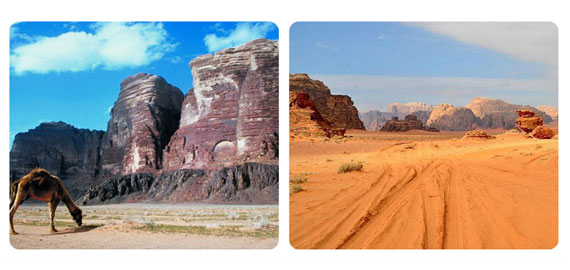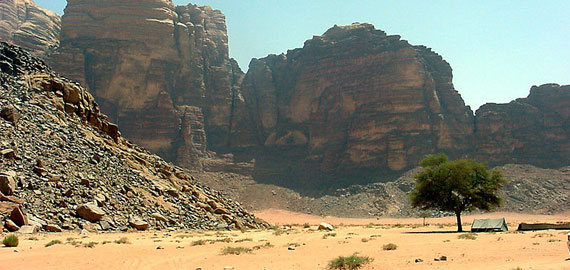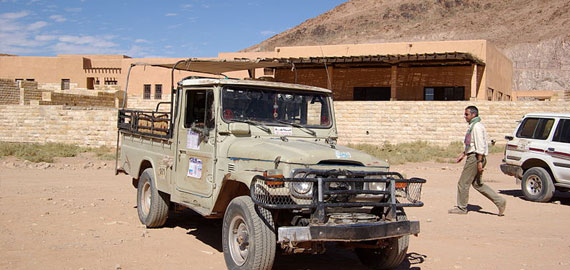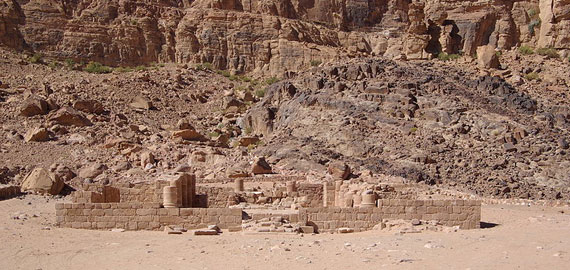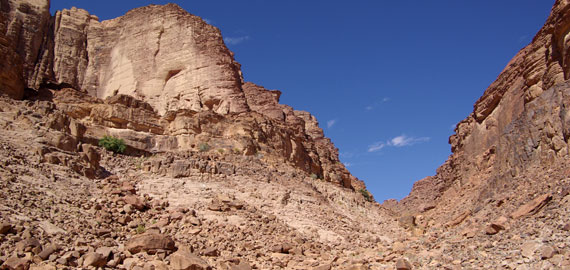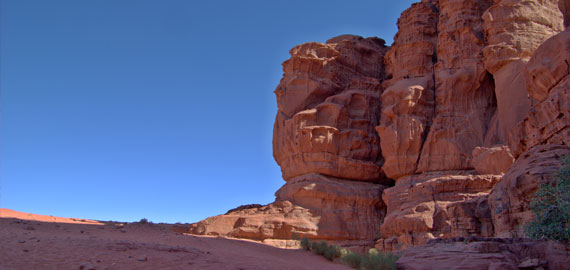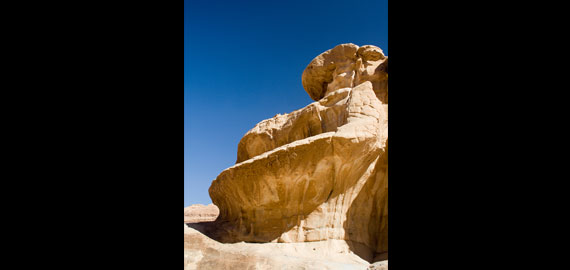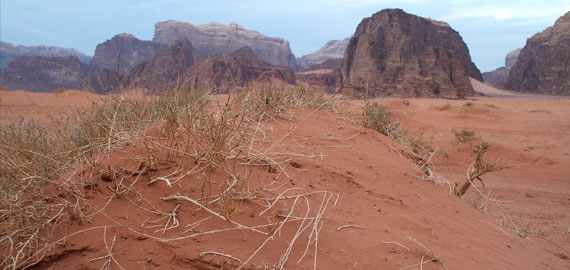The Royal Society for the Conservation of Nature (RSCN) in Jordan is an example of a voluntary sector agent of tourism development. The RSCN aims to conserve the biodiversity of Jordan and integrate its conservation programmes with socio-economic development, while promoting wider public support and action for the protection of the natural environment within Jordan and neighbouring countries.
The Royal Society for the Conservation of Nature is an independent non-profit non-government organisation devoted to the conservation of Jordan's natural resources. Established in 1966 under the patronage of His Majesty the late King Hussein, RSCN has been given the responsibility by the Government of Jordan to protect the Kingdom's natural heritage.
As such, it is one of the few voluntary organisations in the Middle East to be granted this kind of public service mandate. As a result of its pioneering conservation work, RSCN has achieved international recognition.
RSCN works to accomplish its role in managing Jordan's natural resources through a number of activities including:
- Setting up and managing protected areas to safeguard Jordan’s natural environment and biodiversity
- Running captive breeding programmes and successfully saving several endangered species from extinction, such as the magnificent Arabian Oryx, gazelle, and ibex and re-introducing them into the wilderness
- Enforcing governmental laws to protect wildlife and control illegal hunting. The RSCN is also designated as the management and enforcement authority for CITES (Convention on International Trade in Endangered Species of Wild Fauna and Flora)
- Raising awareness on environmental issues, with a focus on school students through establishing nature conservation clubs, providing educational programmes in the reserves, and integrating biodiversity concepts in schools
- Ensuring the socio-economic development of rural communities by creating job opportunities through eco-tourism, craft production, and other nature-based businesses
- Providing training for environmental practitioners throughout Jordan and the Middle East
- Encouraging public participation in RSCN nature activities through membership packages
- Promoting public action for environmental protection through campaigns and activities run by a committee comprised of volunteers from different sectors
EVIDENCE LOG 2 - Important Roles and Actions
Justify your decision by completing the activity in the Evidence Log.
Full Screen
Countries such as Jordan will have more difficulty in establishing National Parks and other protected areas than countries in the More Developed World. This may not be seen as a priority by Government and it will be more difficult to enforce any legislation which is passed.
EVIDENCE LOG 3 – The challenges of establishing a national parkStudy the images of the landscape of Jordan below and respond to the question in your Evidence Log
People living in this area follow a traditional, nomadic way of life which has adapted to the landscape over time.
In Jordan, the RSCN has been successful in setting up and managing seven protected areas in Dana, Wadi Mujib, Azraq, Shaumari, Dibeen, Ajloun, and Wadi Rum. These areas cover over 1200 square kilometres in some of the finest natural landscapes in the country and help to safeguard Jordan’s natural environmentand biodiversity.
http://www.rscn.org.jo/orgsite/RSCN/HelpingNature/ProtectedAreas/tabid/91/Default.aspxUse the site link above to help you identify the seven protected areas established by the RSCN and match them to the information provided.
Full ScreenWild Jordan
Wild Jordan was created as the business unit of RSCN to develop socio-economic programmes in all of Jordan's nature reserves. At present, Wild Jordan manages innovative income generating programmes that build on locally available skills and products and on the tourism potential of the nature reserves. Among the small businesses created to date are hand-crafted silver jewellery, organic jams and fruit leathers, painted ostrich eggs, sandblasted frames, environmental board games, and goat leather nature boxes. All of these initiatives are tied to a strong promotional concept that uses "the reserve address" and the conservation philosophy as the main selling points.
The Dana Project
This project is a good example of a sustainable tourism project developed by the Wild Jordan branch of the RSCN. ‘The Dana Reserve lies just north of the famous archaeological site of Petra and occupies a spectacularly beautiful slice of the Jordan Rift valley. Several thousand people from nomadic and settled communities live in and around the reserve, many of whom are partially or entirely dependent on the reserve for their livelihood. Their use of the reserve, however, is causing serious ecological problems, stemming from excessive livestock grazing, hunting, and fuel wood collection. These activities had little detrimental impact in the past, when tribal populations were smaller and Bedouins could practice their nomadic lifestyles without issues of national borders, settlement policies and major infrastructure developments. But now the pressure of these traditional livelihoods is concentrated in the last remaining areas of unspoiled landscape and is the major threat to their ecological integrity. In an attempt to solve this problem in Dana and create more sustainable income sources, an eco-tourism operation was gradually developed under the GEF project, building on the scenic, ecological and cultural assets of the protected area’.
The Dana Project is clearly explained on the Wild Jordan website.
http://www.rscn.org.jo/Using the link above, read through the information about the development of the project and put the events below in the correct chronological order.
Full ScreenSustainable Tourism
Using the information you have found out about the Dana Project Link, identify what the project has achieved in terms of:
- Environmental sustainability
- Economic sustainability
- Cultural sustainability
And record your findings in the activity found in the Evidence Log.
http://www.rscn.org.jo/Eco-accommodation
Most of the protected areas which have been established by the RSCN offer a range of tourist activities and accommodation. Much of this accommodation has been built around an eco lodge concept to provide visitors with facilities which enhance the experience to some of the most spectacular sites within Jordan. Campsites are also provided in a number of the protected areas.
The Jordan Tourist Board has developed a number of Slideshare presentations which are used as a marketing tool. The Ecotourism presentation, which is available at the link below, provides information about the range of accommodation available within the protected areas in Jordan.
http://www.slideshare.net/DakkakGroup/eco-jordan-map(A number of similar presentations are available from the same website that focus on other aspects of tourism in Jordan).
Providing accommodation such as eco lodges and campsites offers a number of advantages for both the tourist and the protected area they are visiting.
These include, for the tourist:
- Giving the tourist the opportunity to sample local food, drink and local culture
- Offering an extended stay to allow the participation in a wide range of activities
- Having a longer time to appreciate and understand local culture.
For the destination the advantages include:
- Generating more income by charging for the accommodation
- Creating employment opportunities for local people
- Maintaining local skills and traditions in providing food and perhaps entertainment for tourists.
In many countries, there is a drive to encourage tourists to stay in protected areas such as National Parks, rather than just visit for the day. By staying in local accommodation tourists tend to contribute more to the local economy.
http://www.slideshare.net/DakkakGroup/eco-jordan-map Full Screen EVIDENCE LOG 5 – Eco-ToursimNow consider the appeal and range of eco-accommodation in Jordan by completing the activity in the Evidence Log.
The Jordan Tourist Board has developed a number of Slideshare presentations that are used as marketing tools. As well as eco Tourism there are presentations featuring Fun and Adventure, History and Culture and Biblical and Faith tours. Each of these presentations illustrates how the major tourist areas within Jordan, which are Amman, Petra, Wadi Rum and Aqaba, can appeal to different types of tourist.
Adventure and Fun in Jordan:
http://www.slideshare.net/DakkakGroup/adventure-coversEco Jordan:
http://www.slideshare.net/DakkakGroup/eco-jordan-mapHistory and Culture:
http://www.slideshare.net/DakkakGroup/history-culture-7803906 EVIDENCE LOG 6 – Different tourist marketsUse these presentations to complete the table found in the Evidence Log.
Identify and summarise the appeal and activities available at each of the major tourist areas for different types of tourists. Not every tourist area will feature in all of the presentations

